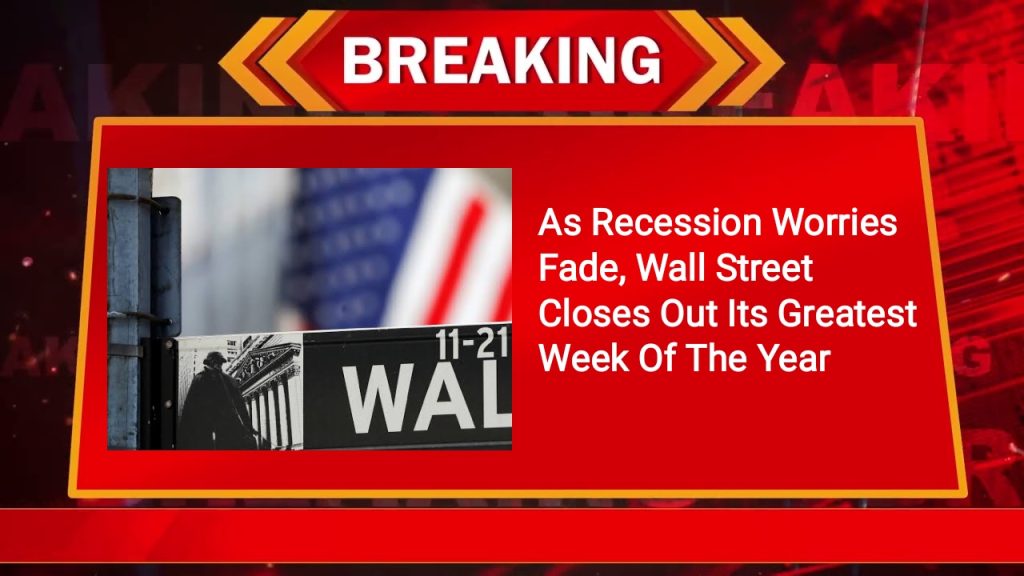As investors turned their attention from fears of an impending economic slump to the Jackson Hole Economic Symposium next week, US markets closed higher on Friday, maintaining their largest weekly percentage gains of the year. The S&P 500 as well as the Nasdaq saw gains for the seventh straight day as equities recovered from two weeks of losses. The sell-off proved the Nasdaq had gone into correction territory and was spurred by bad economic data and increased fears of a recession.
Positive Economic Data
The S&P 500 plus the Nasdaq had their first weekly increases in five weeks, while all three indices saw their largest weekly percentage advances since late October. The CEO of AXS Investments in New York, Greg Bassuk, said, “What we are seeing in the market at present is a continuation of the comeback & the calming of earlier recession fears.” “The positive economic information is really what’s propelling this rally, giving more confidence to investors that a recession is probable to be avoided, as well that the Fed will start cutting rates in September.”
This week, a plethora of high-profile economic statistics, such as the consumer price index from the Labor Department and a report of retail sales from the Commerce Department, gave confidence that consumer spending remains robust and that inflation is still slowly creeping toward the Federal Reserve’s 2% objective. U.S. housing for single-family starts fell to a nearly one-and-a-half-year low in July, according to data released on Friday. However, preliminary results from the University of Michigan regarding August consumer sentiment indicated a stronger than anticipated increase.
Global central bank representatives will be speaking at the conference in Jackson Hole, Wyoming, the following week. Fed Chair Jerome Powell may have established hopes for a U.S. rate-cut trajectory with his keynote address on Friday. Financial markets are pricing in a 74.5% chance of a 25 basis point reduction in the Fed’s key policy rate at the conclusion of its policy meeting in September, with a declining 25.5% chance of a supersized 50 basis point decrease.
Industrials Saw The Largest Decline
At 40,659.76, the Dow Jones Industrial Average increased by 96.7 points, or 0.24%. The Nasdaq Composite increased by 37.22 points, or 0.21%, to 17,631.72, while the S&P 500 earned 11.03 points, or 0.20%, to 5,554.25. Financials saw the largest percentage increase among the S&P 500’s 11 major sectors, while industrials saw the largest decline. After forecasting stronger than expected fourth-quarter revenue, the chip-making equipment company Applied Materials saw a 1.9% decline, erasing its previous spike.
Amcor’s fourth-quarter sales dropped more than predicted. Following the release of the study, the packaging company’s shares on the U.S. market fell 3.7%. On the New York Stock Exchange (NYSE), advancers outweighed decliners by a ratio of 2.22 to 1; on the Nasdaq, the advantage was 1.53 to 1. There were 13 fresh 52-week highs & no fresh lows for the S&P 500, while there were 66 new highs and 85 new lows for the Nasdaq Composite. The volume of shares traded on U.S. exchanges was 10.11 billion, which was lower than the average of 12.27 billion for the entire session for the previous 20 trading days.

